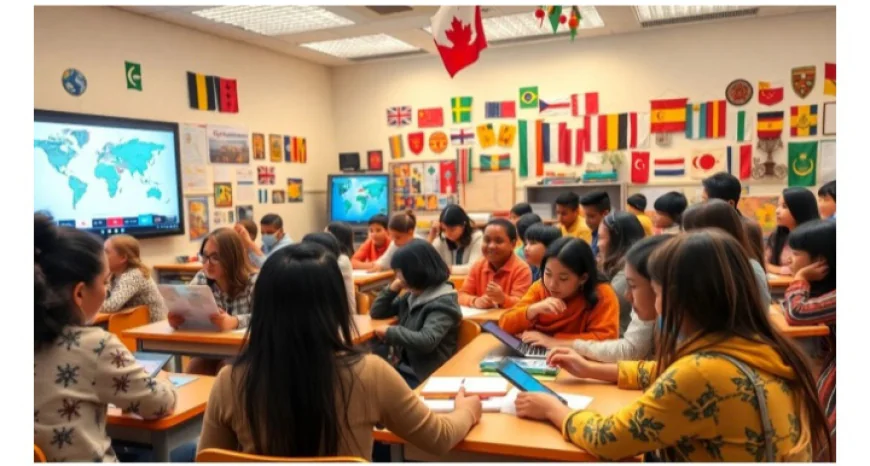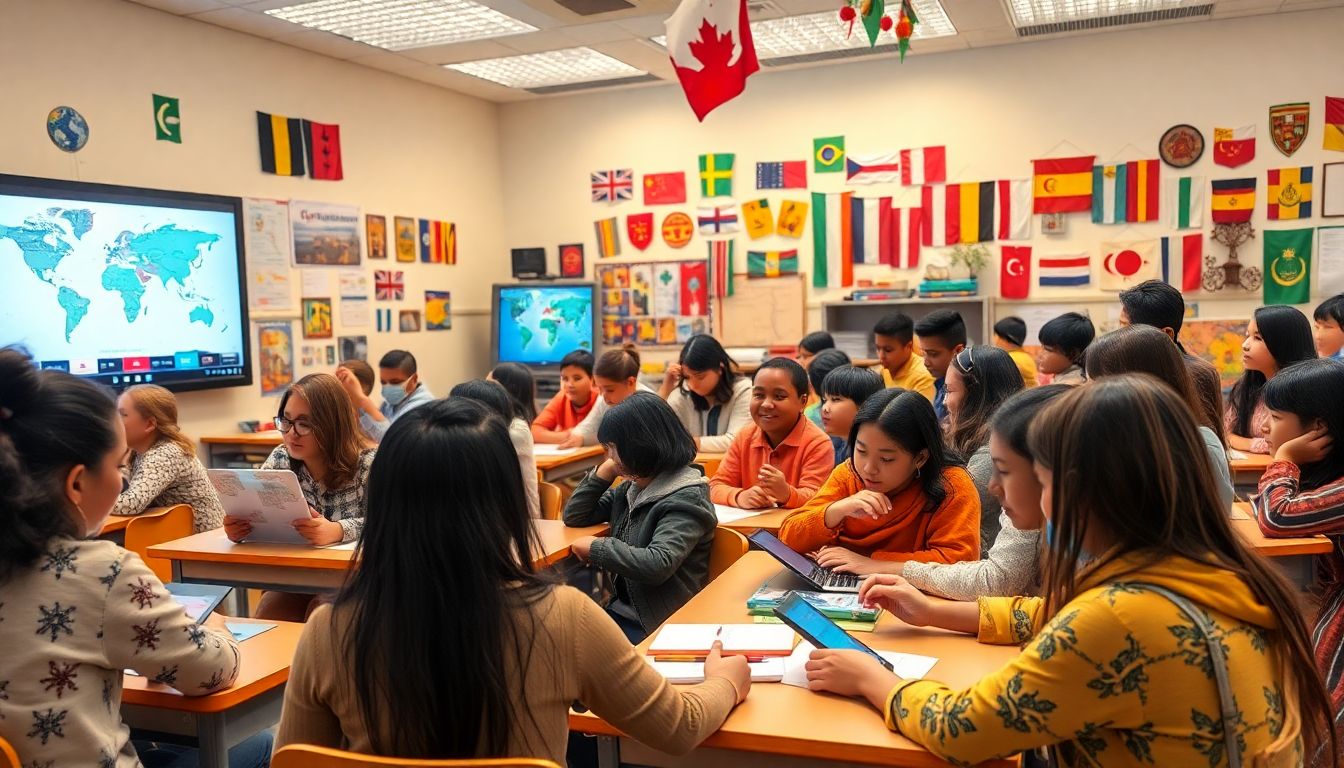Cultural Learning Gaps: Designing Content That Bridges Global Audiences
In today’s world, creating content for a global audience isn't just a good idea—it's a necessity. The internet connects us, making it easier than ever to reach people from different countries and cultures. But this opportunity comes with challenges. Cultural differences mean what resonates in one place might fall flat or offend in another. Ignoring these differences can lead to misunderstandings, hurt reputations, and missed chances to connect. That’s why understanding cultural learning gaps is essential. When done right, it opens doors to more meaningful engagement and brand loyalty from diverse audiences. This article will explore how to craft content that respects cultural nuances yet still creates a unified global message. We’ll cover practical strategies for building culturally inclusive content that truly speaks to people everywhere.


Cultural Learning Gaps: Designing Content That Bridges Global Audiences
Introduction
In today’s world, creating content for a global audience isn't just a good idea—it's a necessity. The internet connects us, making it easier than ever to reach people from different countries and cultures. But this opportunity comes with challenges. Cultural differences mean what resonates in one place might fall flat or offend in another. Ignoring these differences can lead to misunderstandings, hurt reputations, and missed chances to connect.
That’s why understanding cultural learning gaps is essential. When done right, it opens doors to more meaningful engagement and brand loyalty from diverse audiences. This article will explore how to craft content that respects cultural nuances yet still creates a unified global message. We’ll cover practical strategies for building culturally inclusive content that truly speaks to people everywhere.
Understanding Cultural Learning Gaps in Global Content
The Concept of Cultural Learning Gaps
Cultural learning gaps happen when your content doesn’t match the audience’s background or beliefs. These gaps can cause confusion or even offend viewers, damaging your message. For example, idioms or humor that work in one country might not make sense elsewhere.
Imagine explaining a joke that falls flat because cultural cues are missing. That’s an example of a cultural learning gap—your message isn't universally understood. Addressing this gap is key to making sure your audience truly connects.
Factors Contributing to Cultural Gaps
Many things can create these gaps, including:
- Language barriers and idioms: Phrases like “hit the nail on the head” might puzzle non-native speakers.
- Values, norms, and taboos: Some cultures have strict rules about what’s acceptable, like topics related to religion or family.
- Media habits and preferences: People prefer different platforms, styles, and formats. For example, what gains traction on TikTok in one country might not work in another.
The Business Implications of Cultural Gaps
Missing these cultural cues isn’t just about content—it’s about business impact. You risk losing market share if your messages aren’t relevant or respectful. Negative perceptions can damage your brand reputation with long-term effects.
Successful brands show how cultural adaptation matters. For instance, Nike designs sneakers inspired by local traditions when entering new markets. On the flip side, failed campaigns, like Coca-Cola’s missteps in certain regions, highlight why cultural awareness is so vital.
Conducting Effective Cultural Research
Using Data-Driven Insights
Start with numbers. Analytics can tell you who your audience is and what they care about. Look at regional preferences, purchasing habits, and content engagement. Segmenting your audience helps spot differences and tailor your message accordingly.
Engaging Cultural Experts and Local Voices
Hearing from locals can make a big difference. Cultural consultants or influencers understand their community’s values and taboos. Many brands succeed by partnering with regional experts. For example, multinationals like McDonald's adapt menus and ad campaigns through local collaborations.
Audience Feedback & Real-World Testing
Ask your audience directly. Conduct surveys or focus groups in different places and listen carefully. Use A/B testing to see which version of your content resonates best. This real-world feedback can guide future decisions and keep your messaging culturally relevant.
Designing Culturally Inclusive Content
Localization vs. Globalization
Localization means tailoring content for each specific audience—translating, adjusting visuals, and changing references. Globalization keeps the core message consistent but adapts delivery.
Knowing when to localize or stay global depends on the product and market. A soft drink campaign might need local flavor, but a brand message about happiness could stay the same worldwide.
Creating Culturally Relevant Themes
Use stories, traditions, and symbols that fit local culture. Respect comes from portraying cultural practices honestly and thoughtfully. Avoid stereotypes or exaggerated clichés. When done right, these elements make your content feel more authentic and trustworthy.
Language & Visual Elements
Multilingual content increases accessibility. Don’t just translate—consider cultural context when choosing words.
For visuals, avoid stereotypes. Use images that reflect real life and promote inclusion. For example, show diverse people and settings that resonate locally, rather than generic stock photos.
Accessibility & Cultural Sensitivity
Pick formats and platforms preferred in each region. Be aware of cultural sensitivities—what’s okay in one country might be taboo elsewhere. Always ask if your content could offend and be prepared to adapt or remove offending elements.
Implementing Multicultural Content Strategies
Content Development Workflow
Create review processes specific to each culture. Train your team on cultural awareness and sensitivities. Encourage feedback from regional teams or local representatives to catch issues early.
Leveraging Technology & AI
Translation tools have become smarter but aren’t perfect. Use AI for initial drafts but always review with human eyes. Software that suggests cultural tweaks can be helpful when customizing content for different regions.
Measuring Success & Continuous Improvement
Set clear KPIs for cultural relevance—engagement rates, feedback quality, or cultural appropriateness. Use data to evaluate what works and adapt accordingly. The process doesn’t stop once content is live; keep improving based on new insights.
Case Studies & Real-World Applications
Successful Campaigns by Global Brands
Nike’s campaigns highlight local athlete stories across markets, balancing global branding with local relevance. Coca-Cola innovated with regionally tailored ads that reflect local customs and languages, boosting engagement.
Lessons from Cultural Missteps
Sometimes, brands make mistakes. When a global company uses an inappropriate symbol or language, it backfires. These missteps show why involving local voices and research matters. Being culturally aware saves time, money, and reputation.
Innovative Approaches in Cross-Cultural Content
Creative brands experiment with interactive content, such as local storytelling or user-generated ideas. These efforts foster authenticity and deepen connections across cultures.
Conclusion
Ignoring cultural learning gaps risks alienating your international audience. Instead, invest in understanding local customs, beliefs, and preferences. Effective strategies include thorough research, partnering with local experts, and customizing your content thoughtfully.
Building culturally inclusive content isn’t a one-time task. It requires ongoing learning, flexibility, and humility. When you respect and understand your audience’s culture, your message resonates far better.
Prioritize cultural research and localization—these efforts will help your brand truly connect with people worldwide. Embrace the challenge, and your reach will grow stronger than ever.



 VARSHITHA
VARSHITHA